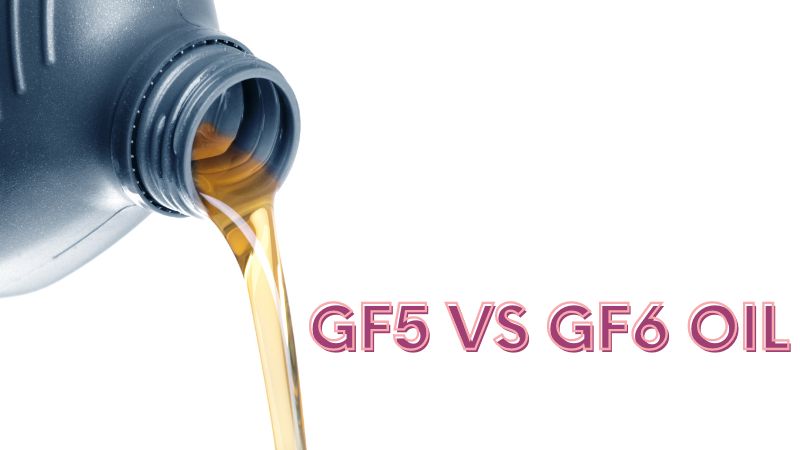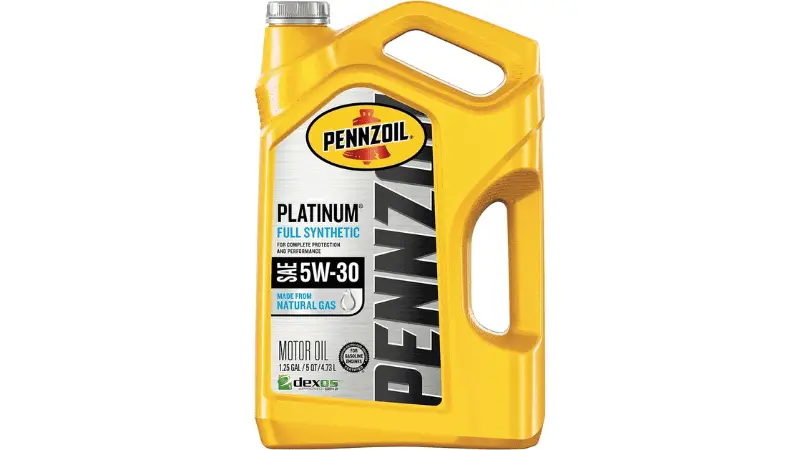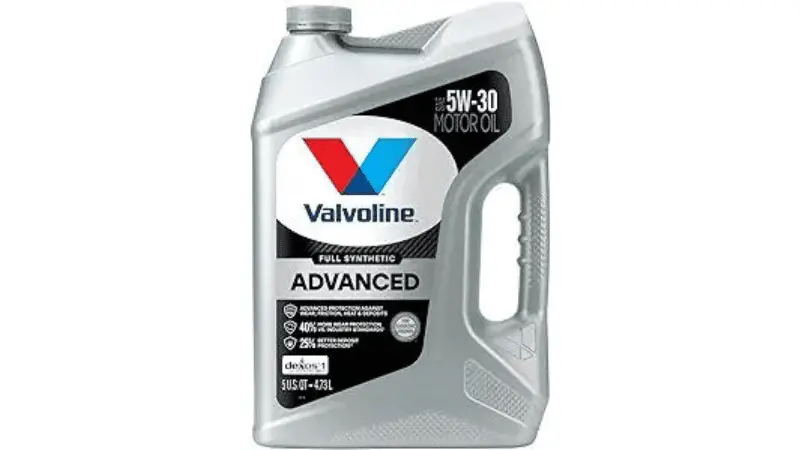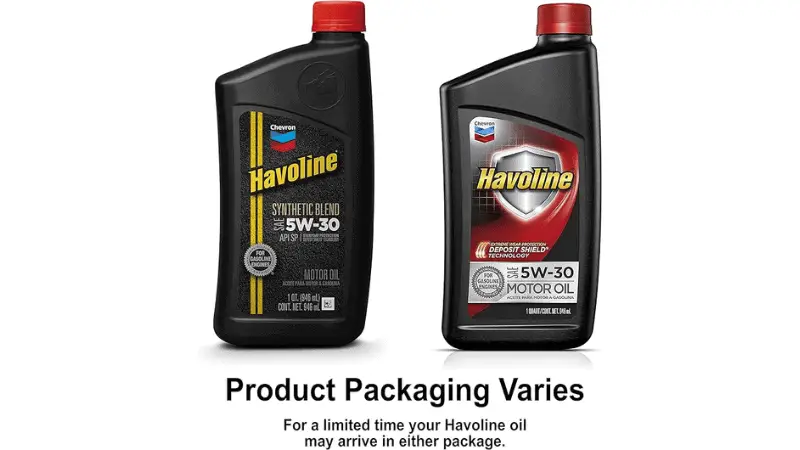GF-5 oil defines engine oil performance requirements for use in 2011 model-year automobiles. The evolution of the ILSAC GF-5 targeted three main performance improvements like improved fuel economy, motor oil durability, and engine sludge protection. In contrast, GF-6, the new ILSAC motor oil, aims to enhance fuel economy and increase passenger car machine capacity.
This GF-6 motor oil standard can replace the new GF-5 standard. Each unique oil standard is consistent with the previous standard. However, from gf5 vs. gf6, which oil standard is excellent? You may want to know. Well, let’s see the difference between gf5 and gf6 here below.
What Does GF-6 Mean?
For passenger car engine oils, this GF-6 is the next ILSAC standard. Its development drivers have endless push for outstanding fuel economy. For this result, engine size was reduced, and increased turbocharged gasoline direct injection (TGDI) engine application.
Generally, GF-6 is the new industry standard motor oil grade, replacing GF-5. The new technology is best for today’s smaller, turbocharged, more energy-dense gasoline direct injection engine.
GF-6 motor oils provide the following performance benefits:
- Enhanced fuel economy and lower emissions
- Adequate deposit control
- Outstanding protection against timing chain wear
- Low-Speed Pre-Ignition (LSPI)
What Does GF-5 Mean?
Adequately, for passenger car engine oils, this ILSAC GF-5 is the latest minimum performance standard. Additionally, ILSAC GF-5 oils enhance fuel efficiency and perform advanced in significant areas. Moreover, it provides high-temperature deposit security for pistons and engine sludge formation. Oils that meet ILSAC GF-5 are outstanding in performance to meeting ILSAC GF-4 and earlier.

Difference Between GF-5 Vs GF-6 Oil:
ILSAC will publish ILSAC GF-6 in May 2020. Notably, this GF-6 is a successor of ILSAC Gf-5 and new standards. That means you can use GF-6 oil in an engine that previously used GF-5 oil. It’s because GF-6 has higher standard properties. However, many older machines may need to be compatible with newer oils.
You don’t know GF-6 specification is a new version of GF-5 and best for new technologies like turbocharging and gasoline. Besides this, GF-6 has new lighter viscosity that can improve fuel efficiency.
When the GF-5 specification was introduced in 2010, the oil companies’ main concerns were the increased use of E85. On the contrary, GF-6 oil meets the requirements of E85 and sludging. Use the correct spec according to the owner’s manual. For your turbo, you can get an advantage from the GF-6 standard. Otherwise, a GF-5 spec oil will be ok.
Best GF-6 Oil:
The GF-6 standard oil can be divided into two subcategories, for example, GF-6A and GF-6B. The GF-6A standard matches SAE 0W20, SAE 0W30, SAE 5W20, SAE 5W30, and SAE 10W30 viscosity grades. Additionally, the existing ILSAC starburst symbol will continue to be used for the GF-6A license.
On the contrary, the new GF-6B standard is for modern engines that only use SAE 0W16. The GF-6B standard will only be compatible with any previous classification if notably approved for use by an OEM. Finally, for licensing purposes, soon GF-6B will assign a different ILSAC Starburst. The best GF-6 oil is:
Pennzoil ILSAC GF-6 Motor Oils:

On May 1, 2020, Pennzoil® fulfilled the GF-6 standard on the first licensed date. Gf-6 is the name of the ILSAC next-generation standard for passenger car motor oils. This oil comes to meet the demands of modern engine technology.
From the first dealing date of May 1, Shell Lubricants has been supplying motor oil that meets the new GF-6 standard. Pennzoil-formulated products it has already completed the ILSAC GF-6 testing protocol.
The protocol consists of eight engine tests; of them, seven are new. Test results determine engine oil meets one of two subclasses of the standard.
Valvoline Exceeds New GF-6 Motor Oil Standards:

Valvoline’s GF-6 formulations come with traditional, fully synthetic s synthetic blended high-mileage products. It provides better wear protection across specifications and engine failure. The latest ILSAC standards deliver higher engine oil standards.
Along with meeting ILSAC, Valvoline GF-6 oils standard also fulfill API SP. It’s because they are designed to address the crucial demands of today’s engines, including LSPI, chain wear, and deposition. GF-5 motor oils began to abolish from distribution after the launch of GF-6 on May 1, 2020.
Valvoline oils conforming to the ILSAC GF-6A standard will display the “Starburst” API symbol on all bottles. The Oil Meeting API SP can feature an updated API with the designation “Donut” SP.
Chevron Havoline Passenger Car GF-6 Standard Motor Oils:

Chevron Havolin’s passenger car motor oils meet ILSAC GF-6 industry standards for safety, performance, and fuel economy. Havoline® trusted motor oil is best for mechanics and drivers that can provide better performance and protection. You can get all the advantages with high mileage formulation from these motor oils.
This oil is formulated with seal conditioning agents and a cleaning booster proprietary. Hence, it can help to increase engine life to ultimate protection and prevent oil consumption. Havoline PRO-DS performs and protects high-mileage, fully synthetic new vehicles with more than 75,000 miles accumulated.
ILSAC GF-6A Vs GF-6:
Accordingly, the GF-6A replaces the GF-5 specification and is defined by the Starburst certification trademark. Yet, it can provide a new performance level for combustion engines. On the other hand, the ILSAC GF-6B specification can offer the same performance as the GF-6A.
But its additional lower HTHS requirement provides more potential fuel economy advantages. Usually, this is specified by a unique API certification mark, “Shield.” Therefore, the GF-6B oil standard will only define 0W-16 viscosity grade oils.
ILSAC GF-6 Vs. Dexos:
All Dexos versions have better performance parameters than ILSAC GF-6 in some cases. And Dexos1 G3 is better than G2, and G2 is better than G1. Dexos generation 3 tests to compare generation 1 to 2. Don’t use one standard for another that is similar but different. This differs from what oil will actually test but the minimum value needed. It will be best to find an oil that matches GF-6 and Dexos. You can find many oils that combine both.
Final Word:
In short, the JAMA in’s complete form is the Japan Automobile Manufacturers Association. Ultimately, in 1990, this company encouraged its members to adopt the API and ILSAC GF oil specifications. Subaru, Toyota, Nissan, and Honda suggest using API-approved motor oils that fulfill the GF-5 specification.
It covers most Asian vehicles sold since 2004. GF-6A oils are also consistent with GF-1 oils. Also, you can use the new GF-6A oils for most Asian automobiles up to the 1992 model year. However, we have described the difference between GF-5 vs. GF-6 oils standard.

